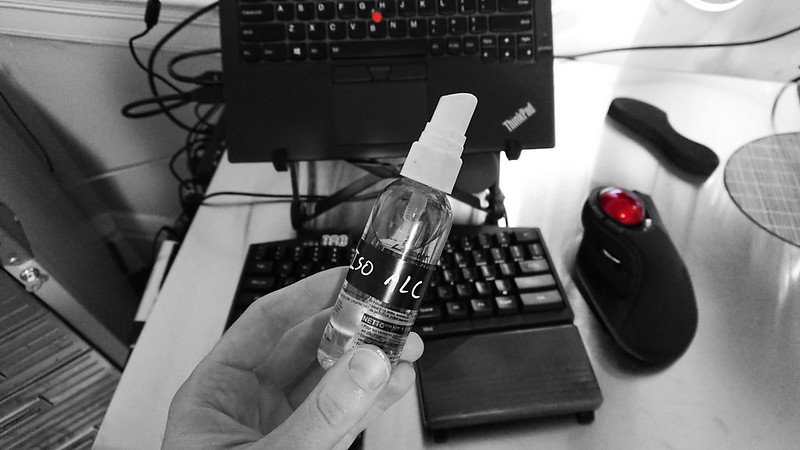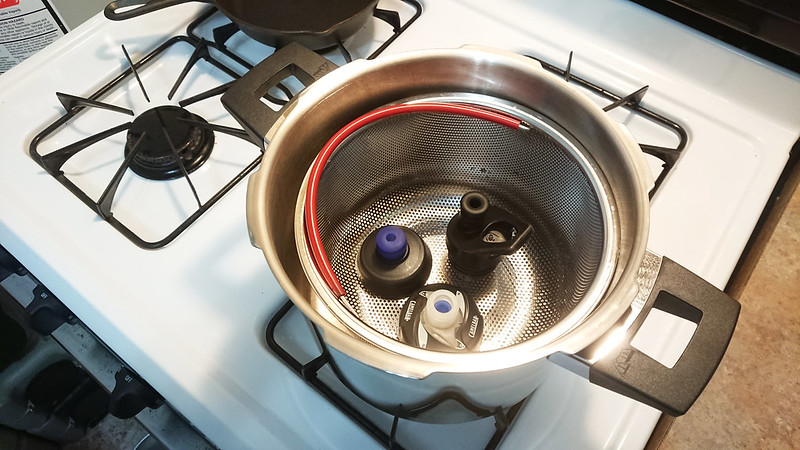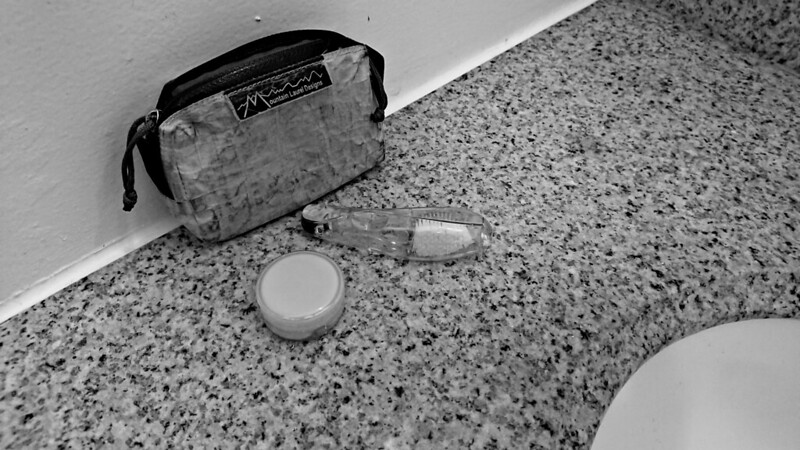The Toothbrush and Its Maintenance
I like RADIUS toothbrushes. I use the Source at home and the Tour elsewhere. Both utilize the same replaceable brush head. Anytime you’re dealing with tools that have replaceable, consumable parts – whether those parts are batteries, magazines, or toothbrush heads – the compatibility of those parts across the different tools is critical to user sanity. Replaceable toothbrush heads are convenient in that they decrease waste and allow you to stock up on multiple years worth of tooth cleaning supplies in a smaller space than would be required by the same number of toothbrushes.
I find the RADIUS heads to be effective at cleaning, and my dentist seems to approve of the results. I use both the “soft” and “flossing” heads, with no real preference between them. My experience is that bristles of both last an unusually long period of time when compared to other toothbrushes. To fully take advantage of the potential service live, the bristles must be periodically cleaned. I do this by soaking the head in a solution of 3% hydrogen peroxide for 20 minutes, which has been proven effective by multiple studies. I do this every other week or so.
I have a few travel toothbrush cases similar to these left over from before I found RADIUS (the Source handle is too chunky to fit in these). Each case consists of two parts. One half has a small hole for ventilation. The other half has no hole. I fill this hole-free half with 1/2 oz of hydrogen peroxide, shove the toothbrush in head first (the fat part of the Source handle that doesn’t fit in the case sits above this half, so it isn’t a problem), and then place it in a mason jar to hold it upright on my counter. Of the random assortment of containers around my home, this half of a travel toothbrush case is what I found allowed me to completely soak the head using the least amount of hydrogen peroxide.
After soaking, the Source toothbrush is stored in a covered holder on my wall, which allows it to air dry while keeping it protected from assault by airborne turd particles.
The Source handle can be sterilized in my kitchen autoclave, but the replaceable heads and the body of the Tour become deformed if exposed to these high pressures. I usually just wash the Source handle by hand with my normal dish soap when I think of it. Mold can grow in the socket of the handle that the head is shoved into, so this does need occasional cleaning. I clean the body of the Tour the same way when I return home from a trip.
The Tour toothbrush (complete with head) tips my scale at 20 grams (0.7 oz). It is neither the lightest nor the most compact travel option, but the convenience of the form factor combined with having the functionality of a full-sized toothbrush when deployed and the commonality of the replaceable head with my home solution makes me uninterested in lighter and smaller options that invariably sacrifice convenience.
I’ve found that when purchasing 16 oz or 32 oz bottles of hydrogen peroxide the necks always have 28-400 threading, regardless of brand. This allows me to replace the lid with one of the sprayers I use for my all-purpose cleaner, turning the hydrogen peroxide bottle into a convenient tool for disinfecting things like counter tops and my toilet cleaning brush.




